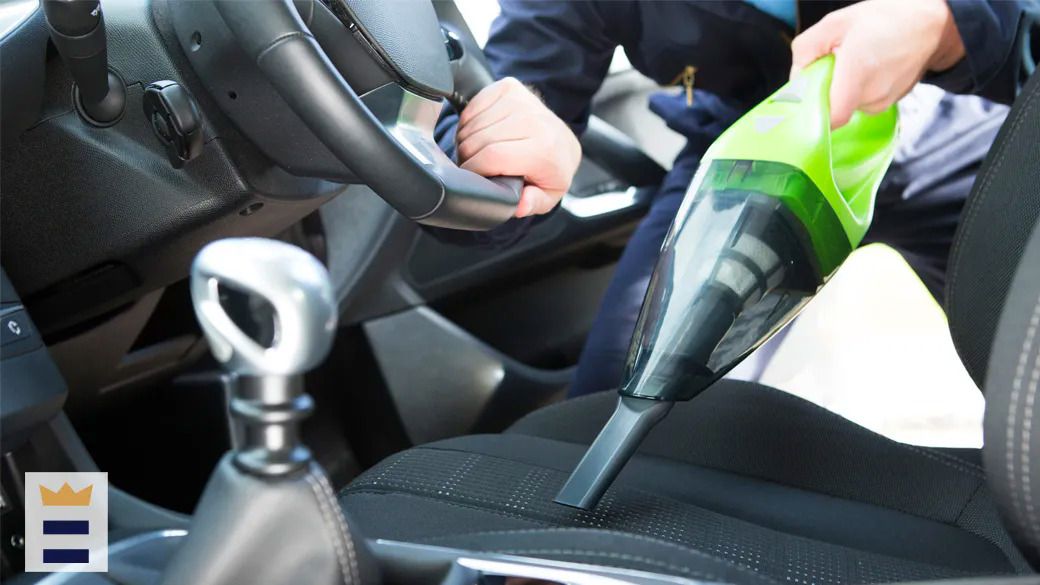
Renault's Clio etech urban model is made with the Captur plug-in hybrid, which provides exceptional performance for everyday driving. This article will examine the Captur-e-tech's S Edition version. Hopefully you'll find one that suits your needs. After reading this article you will be better equipped to make an informed choice about your next car.
Clio e-tech
The new Renault Clio e-tech hybrid is a greener version of the existing Clio. It features a 1.6-litre normally-aspirated engine and an automatic clutchless dog gearbox. There are a variety of trim levels available, including the entry-level S Edition and the luxurious Iconic models. Sportier handling and tighter suspension can also improve the Clio’s performance.

Captur Plug-in Hybrid plug-in hybrid
The fuel consumption of the Captur E-TECH Plug-in Hybrid is below PS31 l/100 km on a normalized basis, which is representative of urban driving patterns. A normal mode of the hybrid system uses 50% electricity and half petrol. It can be driven 100 percent electric during work week and switched to hybrid mode on weekends. The Captur E-TECH is the best compact SUV for those looking to maximize efficiency.
Captur E-tech S Edition
The Renault Captur E-TECH's interior design is elegant and well-equipped. The cabin has a comfortable driving position. The cabin is high so that the driver can see the road ahead. Three trim levels of the car are available: S Edition (entry-level), R.S. Line. The entry-level model features 17-inch alloy wheels, rear parking sensors, LED headlights, and a leather steering wheel. The cabin is well-equipped with a seven-inch touchscreen infotainment system that includes Apple CarPlay as well as Android Auto.
Captur e-tech S Edition S Edition
Renault Captur E-tech S Edition, the latest plug-in hybrid SUV from the company, features an engine that was developed using F1 racing technology. Although it is less powerful than that of the Clio, its low fuel consumption makes up for the difference. It's also much more expensive. The Captur E-tech receives a TG rating 6/10, which is comparable to the Clio.

Trim. S Edition
French manufacturer Renault has revealed the new Renault etech hybrid Captur. It is a compact SUV with hybrid technology derived from the company's Clio supermini. The Captur Etech is now available to order. It starts at PS24.500 with the full-hybrid Iconic trim. It rises to PS26.595 with the S Edition trim. Deliveries begin August 2021.
FAQ
What jobs are available for car mechanics?
For car mechanics, there are three main areas for employment:
-
Automotive repair shops
-
Dealerships
-
Independent garages
Automotive repair shops
This is the place most people begin to consider becoming mechanics. It's the easiest way for most people to get started. You can either work at a shop owned by someone else or set up your own business.
If you plan to work in a shop, you must apply to join the union. Once accepted into the union you will be trained by the union.
Once you complete the training, it's time to get started.
Registering with the government is required if you intend to open a garage. After registering, you'll be required to meet certain standards.
Once you register, you'll receive a license that allows you to operate your garage.
Your license allows you to sell spare parts and make minor repairs. It won't allow you to fix major engine problems.
In addition to selling spare parts, you'll also be expected to offer advice and guidance to customers.
Dealership jobs
Most dealerships employ mechanics who specialize in one area of the car. They might be able to only fix brakes or replace tires.
Some dealerships have the option to hire general mechanics who can take care of all aspects.
These positions often require applicants to undergo specific training before being allowed to work. Employers can then choose the best candidates for their job.
Some dealerships even recruit graduates straight from university. These graduates have no difficulty learning about cars because they already know the basics and principles of mechanical engineering.
Independent garages
Independent garages don't belong to any particular dealership. They are more focused on providing top-quality service.
Because independent garages aren't affiliated with any company, they can afford to pay higher wages. This makes them generally more well-paid than jobs at dealerships.
Independent garages can be just as good places to work, but this does not mean they are better. Many business owners prefer to be in control of their businesses than to delegate it to employees.
So you may find yourself working long hours without having any say over what happens during the day.
It is also possible to expect lower wages than you would if working at a dealer.
The good news is that you can easily switch between different kinds of jobs. You can switch jobs easily if you are interested in working at a dealership. Simply ask your employer if they would be open to hiring you as a mechanic.
If you prefer to work in an independent garage, you might consider applying directly to its owner.
The bad news? Finding a new position isn't always easy. There are plenty of other factors that influence how much you earn.
This could include the type of vehicle that you are working on and whether or not you charge an additional for labor.
What qualifications are necessary to become a mechanic
To become a technician, you will need to pass a series exams. These include:
-
A general knowledge exam
-
A practical exam
-
An apprenticeship test
These tests are intended to make sure you have a solid understanding of the basics of mechanics before you can start your career as a mechanic.
You'll be eligible for work as a mechanic after you have passed the tests. You will still need to complete an apprenticeship. This will require you to learn the trade.
To be able to repair vehicles, you'll need classes or workshops. Additionally, you will need to work with experienced mechanics.
For mechanic success, you'll need to be focused and meticulous. You will need to pay careful attention to every aspect when repairing vehicles.
To become a successful mechanic you'll need patience. If you don’t enjoy following instructions, this might not be the right career path.
This job is for you if you are passionate about cars and love fixing them.
What is the difference in a mechanic and an auto technician?
Both are related, but they are not the same. A mechanic repairs cars while an automotive technician does maintenance on them.
A mechanic should be able to do simple tasks quickly and have good manual dexterity. A mechanic should also be able accurately diagnose and repair problems.
An automotive technician is required to have more technical knowledge than a mechanic. They must be able and able to read blueprints as well as use tools like drills or wrenches.
They must also be able perform complex procedures safely. They must be familiar with all types of electrical and engine systems.
They must also be capable of understanding how parts interact.
A mechanic typically earns less than an automotive technician. Both careers have many options.
Is a career in automotive mechanic promising?
There are many exciting opportunities in the automotive industry for people who are driven to achieve excellence. This field requires hard work and the willingness to learn from others.
Communication skills are important as customers and coworkers will often be your main focus. You will need to be able and willing travel for work, making it more difficult to commute.
Consider taking classes at local universities or community colleges if your goal is to pursue a career in the automotive industry. Many schools have programs that are specifically tailored for students who are interested in automotive sales, repair, and customer service.
Mechanical engineering is a good choice if you are interested in pursuing a degree. You can get your bachelor's degree in as little as four years.
In addition, many companies will hire graduates straight out of school. It's a smart idea to begin looking for work while you have the opportunity to study part-time.
After you complete your education, you may need to undergo some type of training before you can become an automotive technician.
This means you'll need pass exams like the Automotive Services Excellence (ASE), certification exam. This test covers topics such engine maintenance as brakes, steering, suspension, etc.
After passing the ASE exam, you can apply for a National Institute for Automotive Service Excellence license.
Private individuals can have their vehicles repaired with a license. Based on the services rendered, you will receive compensation.
Not all states require licensing. However, licensing is required for anyone who plans to work outside the home state.
Some states do not issue licenses until they have received a certain amount or training. This may be the case for you.
How long is an apprenticeship for an automotive mechanic?
The apprenticeship to become an automotive mechanic takes about three years. This includes two years at school and two years working as an apprentice. The first year teaches you all aspects, from theory to practical skills and safety procedures. You will also learn to use tools efficiently and safely during this period. You'll spend the second year in on-the-job training, where you will gain experience in various trades. You will have the opportunity for formal training during these years.
The last year of the program is dedicated to gaining certification and qualifications in the field. These include NVQs, which are obtained after passing industry-specific exams. There are also HNCs (Higher National Certificates), which cover general subjects like management, business administration, customer service, and more. Finally, there are City & Guilds certificates that are offered for those who wish to become qualified in certain trades.
What are the requirements for an automotive technician?
You must have high school, or GED, and be able to read and write well in English and math. It is also necessary to be able both to read and to write. After passing a written test, you will need to complete a series of practical tests before you are allowed to begin working.
How can I prepare myself for a mechanic apprenticeship
It is vital to be able to comprehend what you are doing. You need to understand the mechanics of cars and how they work. This will help you to plan your first day in the garage.
You also need to know how to fix simple problems such as broken lights, tires, etc.
This should help you learn how to diagnose issues and repair them yourself.
For the purpose of putting them back together again, you'll need to be able to identify how each piece fits together.
Finally, you need to be able to safely and efficiently use tools.
These are all things that will make you a competent mechanic.
Statistics
- The U.S. Bureau of Labor Statistics (BLS) reports that the job outlook for automotive service technicians and mechanics is expected to decline by 4% from 2019 to 2029. (indeed.com)
- 52% of Mechanics in the United States think their salaries are enough for the cost of living in their area. (indeed.com)
- According to the BLS, total auto technician employment is expected to exceed 705,000 by 2030. (uti.edu)
External Links
How To
How to properly diagnose your vehicle for repair
First, look at the symptoms of your car to determine if it needs repair. These steps will help you diagnose your car properly.
-
Check engine lights. Inspect the dashboard light indicators. These include the engine lights, the oil pressure gauge and the battery light indicators. The RPM gauge and coolant temperature gauge should also be checked. If any of these indicators have been flashing continuously for several days it could mean that there is something wrong with your vehicle.
-
Pay attention to the treads on your tires. Tire wear can lead to problems in handling and brake performance. You should also inspect the wheel treads. They should be smooth and clean. You can do this by taking off the wheels. Use a flashlight to see how well the treads are worn.
-
Observe the brake fluid level. Keep track of the brake fluid level in your vehicle. This ensures that your brakes work properly. If your brake fluid level is low they might not work properly when you apply pressure.
-
Check the suspension system. Most vehicles have a suspension system that absorbs shocks and vibrations. This suspension system provides greater control and smoother acceleration and deceleration. If your vehicle has a suspension problem, it might feel wobbly or shake uncontrollably. You can test if your vehicle has a suspension problem by putting weight on either the front or back axle to see how it moves.
-
Examine your steering column. Steering columns connect the steering wheels to other parts of the vehicle. The steering column can often be damaged by an accident. Replace it if your steering column feels loose or unsteady.
-
The exhaust pipe should be observed. The exhaust pipes are responsible for moving gases from the combustion chamber into the atmosphere. If your exhaust pipe leaks or cracks, it will allow harmful fumes into your cabin. Also, if your tailpipe is bent, you should fix it immediately.
-
Check under the hood. If you see anything unusual, take a look under the hood. Your engine could be leaking fluids. You should also contact a professional technician if there is an unusual odor coming from the engine compartment.
-
Make sure to check the air filter. The outside environment can collect dust and other debris in your vehicle's air filters. A dirty air filter causes your vehicle to run poorly. Replace your air filter regularly.
-
The fan belt should be checked. The fan belt is the link between the engine and the transmission. The engine will not turn if the fan belt breaks. The process of replacing the belt is straightforward. You will need a screwdriver, pliers and a pair of pliers.
-
You should inspect the radiator and hoses. The radiator hose transports water from radiator to engine. It can become cracked or damaged and leak hot liquid onto your engine. Repairing the hose is easy with a pair of needlenose pliers or a small wire brush.
-
Be sure to inspect your windshield wipers. Windshield wipers work by using electricity to remove rain and snow. If they stop functioning, they can leave streaks in your window glass. To fix the problem, simply change the washer fluid.
-
You should inspect the cables. The battery cables provide power for the electrical systems in your car. When you replace batteries, make sure to disconnect the negative cable first. Failure to do so can damage your alternator.
-
Make sure your headlights are working properly. The headlights will illuminate the road ahead. Poor visibility can result if the headlights don't function properly. To determine if your bulbs are out of date, check them.
-
Pay attention to the lights. When you approach them at night, the lights warn other drivers. You may be distracted by the light and end up in an accident.
-
Make sure you check your brakes. Before you have a collision, brakes slow down your car. You could lose control of the car and cause a crash if they don't work properly.
-
Change the oil. Oil keeps your engine lubricated. It protects metal parts and prevents them from wearing too quickly. It is recommended to change the oil each month.